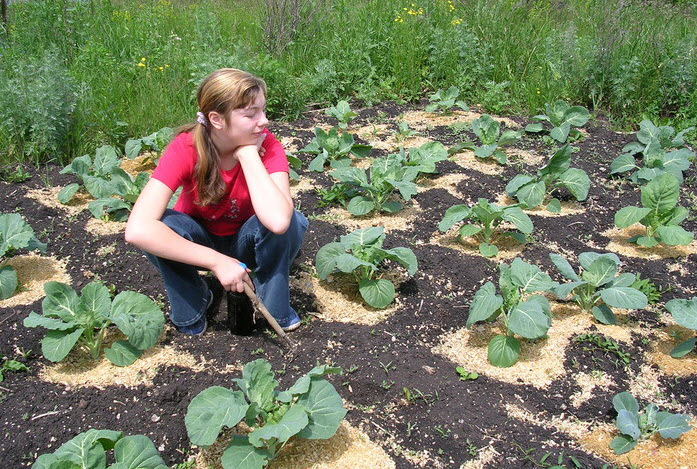
Regular and high-quality top dressing is a prerequisite for good cabbage growth and the formation of strong heads. For fertilizing cabbage, you can use complex fertilizers and mineral mixtures purchased in the store, but in each farm there are raw materials or waste that are valuable for the nutrition of cabbage bushes.
Content
Feeding Times
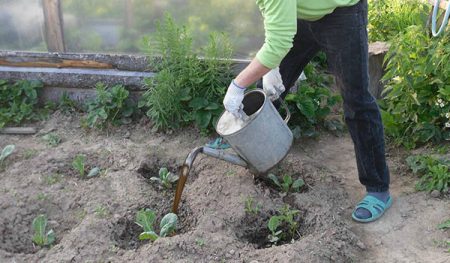
During the growing season, not counting top dressing seedlings and fertilizers laid in the planting hole, it is necessary to carry out 3-4 dressing of cabbage:
- The term of the first of them depends on whether fertilizer was applied during planting. If yes, the procedure should be carried out in 1-1.5 months, if not - in 10-15 days after transplanting seedlings into the ground.
- The second top dressing is carried out 20 days after the first.
- The third - 10 days after the second.
- The fourth top dressing is required only for late-ripe cabbage. Fertilizer must be given 20 days before harvesting.
First feeding
After planting in the ground, the young plant is intensively gaining green mass, therefore, the most "expendable" nutrient at this stage is nitrogen. The highest concentration of the substance is found in bird droppings, cow manure and compost.
Manure and chicken droppings
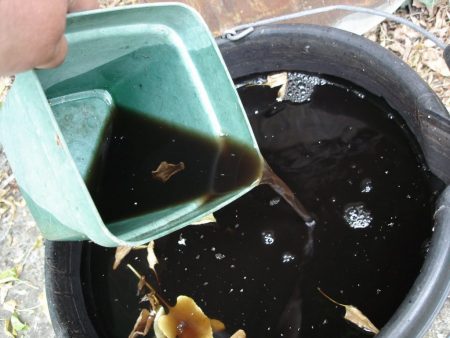
At the beginning of the growing season, the best option for nitrogen top dressing is cow manure. The advantage of fertilizer is that all the nutrients in it are in a form that is easily and quickly absorbed by plants. In addition to nitrogen, manure contains potassium, iron, boron, sulfur, magnesium and calcium.
The recipe for nitrogen fertilizing from manure:
- 5 kg of cow manure pour a bucket of water;
- insist, stirring, about a week;
- Dilute 1 liter of the resulting solution with 20 liters of water;
- add 120 g of superphosphate to the solution;
- pour 1/2 liter of remedy under each bush.
Superphosphate in the fertilizer can be added at the request of the gardener. Phosphorus contributes to the development of the root system and strengthening the immunity of cabbage, therefore, during the period of adaptation after transplantation, the value of the element for plants is undeniable. Wood ash is saturated with the largest amount of phosphorus among organic fertilizers, but it cannot be mixed with manure. A mixture of manure with superphosphate can be stored.
Poultry manure infusion is prepared similarly to manure, but the concentration of fertilizer in the finished product should be lower - 15 parts of water per 1 part of manure. If the chicken droppings are old, a 1:10 ratio is allowed.
Ammonia
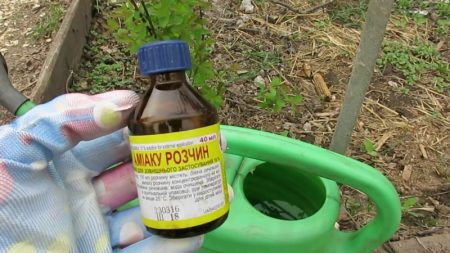
Nitrogen fertilizer can be prepared from ammonia:
- in 10 liters of water dissolve 100 ml of ammonia;
- pour 150 ml of solution under each bush.
The amount of nitrogen in this dose is not enough for a proper nutrition of cabbage, but it is not recommended to exceed the dosage. Saturation of cabbage with an element is carried out in stages: 2-3 irrigation with a solution of ammonia should be carried out with interruptions of 6-7 days.
Eggshell
To build cabbage leaves, calcium is also required. If the content of the element in the soil is insufficient, the period shortly after transplanting the seedlings is the best time to fill the deficit.
For 100 g of eggshell, 34-37 g of calcium is consumed, which makes cooking waste a real treasure for feeding. When dry, the shell is absorbed by the plant for too long, so it is recommended to use the infusion:
- grind dried shells from 10 eggs into powder;
- pour a liter of boiling water;
- insist 5-7 days, occasionally shaking the solution;
- dilute each part of the solution with 3 parts of water;
- pour cabbage of 0.5 liters per bush.
Hydrogen peroxide
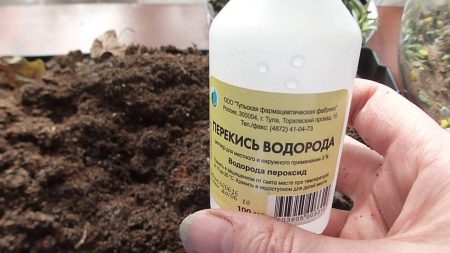
Feeding with hydrogen peroxide is useful for young cabbage - a substance similar in physical terms to melt water saturates the soil with atomic oxygen, which accelerates the growth of bushes. The tool protects the roots from decay and destroys the pathogenic bacterial flora in the soil.
Peroxide Solution:
- Dilute 20 tablespoons of 3% peroxide in 10 liters of water;
- pour 0.5 liters under the root of the bush.
It is recommended to repeat watering after 6-7 days.
Second feeding
During this period, cabbage still needs a large amount of nitrogen, the value of phosphorus increases. Wood ash and chicken droppings are distinguished by a high phosphorus content; a smaller proportion of the element is contained in cow manure.
Bird droppings and wood ash
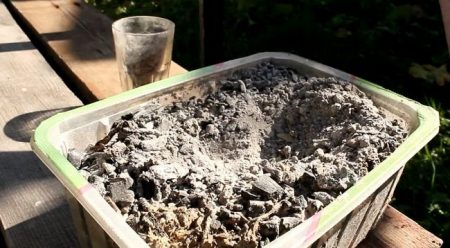
The recipe for nitrogen-phosphorus nutrition:
- pour 250 g of wood ash into a liter of hot water;
- let it brew for 3-4 days;
- dilute a liter of infusion with a bucket of water;
- dilute 1/2 kg of compost or chicken manure in a liquid;
- give a liter of solution under the bush.
This mixture can be used for the third top dressing, but not for the fourth.
Yeast
Yeast is effective for feeding cabbage with vitamins and amino acids. The tool can be applied 2 times per season with a monthly break. In this case, fertilizer can be given between the first and second top dressing, and then between the second and third.
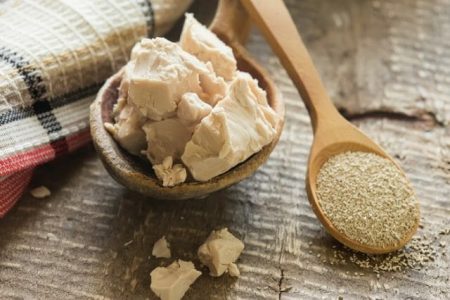
Yeast Fertilizer:
- Dissolve 20 g of dry yeast in a liter of warm water;
- add 20 g of sugar to the mixture;
- insist for 7 days;
- dilute with 10 liters of water;
- pour 1 liter under the bush.
Since yeast top dressing depletes the soil with calcium and potassium, to replenish the elements, after 2-3 days you need to make a mixture of ash and ground egg shells using the dry method, i.e., scattering under cabbage bushes.
Boric acid
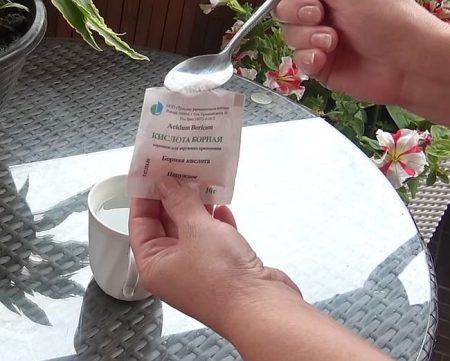
To obtain dense and large heads of cabbage, the plant requires boron. Top dressing should be done no later than mid-summer, as boron also stimulates leaf growth.
Recipe for boron dressing:
- 1 teaspoon of boric acid powder pour 250 ml of boiling water;
- mix to dissolve the crystals;
- pour 250 ml into 10 liters of pure water;
- apply in a non-root way.
Potatoes
Another fertilizer that promotes the growth of cabbage leaves and the formation of heads of cabbage is an infusion of potato peelings. A healthy vegetable contains potassium, phosphorus, calcium, iron, and vitamin C.
Potato infusion:
- potato peel should be filled with boiling water;
- insist 3 days, periodically mixing;
- strain the solution;
- pour a glass of infusion under the bush.
Top dressing can be repeated every 2-4 weeks until heading.
Third feeding
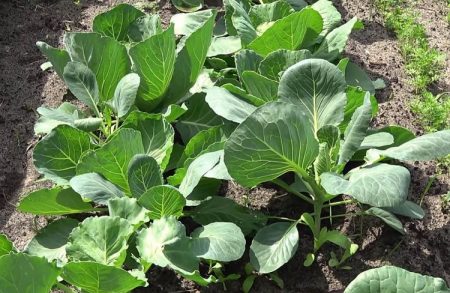
The purpose of this feeding is to stimulate the setting of heads of cabbage and improve their quality. At this stage of growth, the plant must first be fed with phosphorus, which improves the taste of cabbage leaves and makes them more juicy. With an element deficiency, cabbage acquires a bitter aftertaste.
For this feeding, an ash solution without chicken droppings is used, diluting 0.5 liters in a bucket of water. Under the bush give 1.5-2 liters of funds. In addition, you can use additional dressing to improve the ovary.
Potassium permanganate
Helps speed up the process of heading out.
A weak solution is required:
- 3 g of potassium permanganate diluted in 10 liters of water;
- the solution is applied under the root of 0.5 liters or is used to spray leaves.
Iodine
The saturation of cabbage with an element is reflected in the elasticity of the heads and their size, increases the keeping quality of the crop, improves the taste, and contributes to the accumulation of vitamin C. Using iodine to feed cabbage bushes can increase the weight of the heads up to 2 times.
The use of iodine solution:
- add 40 drops of iodine to a bucket of water;
- pour a liter of funds under the bush.
Iodine solution can also be used for spraying bushes by pouring 20 drops into a bucket of water. In this case, iodine will also serve to protect plants from diseases. It is recommended to spray on a wet sheet, after irrigation or rain.
Fourth feeding
The last time fertilizer is required to extend the shelf life of the crop in the future. Nitrogen is no longer given to plants; potassium and phosphorus nutrition is necessary. In addition to the ash infusion, turn to other sources of potassium - herbal infusions and banana peels.
Nettle
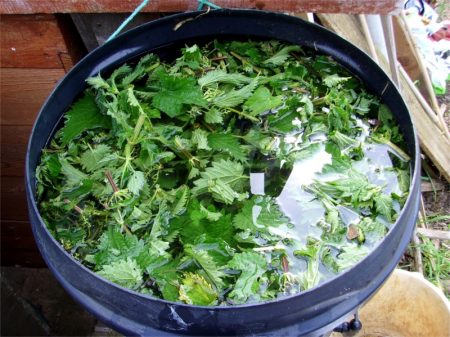
Green infusion can be prepared from any weed herbs, but gardeners believe that nettle is best for such feeding. Use the green parts and rhizomes of the plant.
Nettle infusion:
- chop nettle and fill the bucket with greens;
- pour a bucket of water;
- let it brew for 5-7 days;
- dilute the infusion with 10 parts of water;
- pour 1.5-2 liters per bush.
Banana peel
Banana tops contain up to 7.8% potassium, as well as phosphorus and trace elements. It is advisable to use it in the form of infusion, since the time for the assimilation of fertilizing in plants is already short.
Peel infusion:
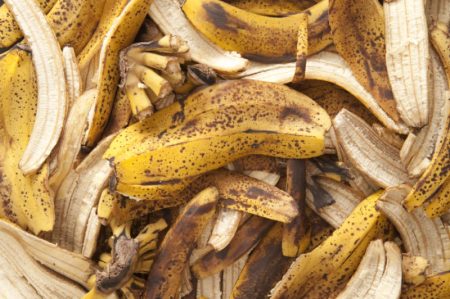
- pour fresh skins from 15-20 bananas with a bucket of warm water;
- insist under a closed lid for 5 days;
- strain the liquid;
- to part 1 part of infusion with 3 parts of water;
- water 1 liter under a cabbage bush.
A quick banana dressing option is to whisk 4 skins in a blender in a liter of water. A teaspoon of mousse is diluted in a glass of water and the product is poured under a cabbage bush.
Soda
Soda is able to protect cabbage from cracking and increase their keeping quality:
- Dissolve 20 g of baking soda in a bucket of water;
- spray the bushes with a solution.
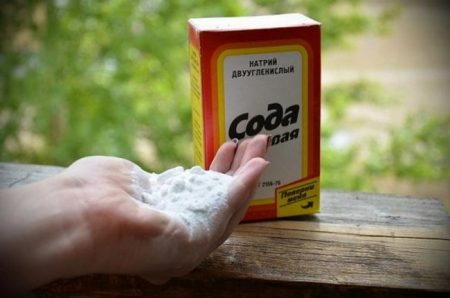
It is impossible to grow high-quality and large forks of cabbage without top dressing. The use of folk remedies significantly reduces the cost of fertilizers and allows you to control the "chemistry" that the cabbage receives.

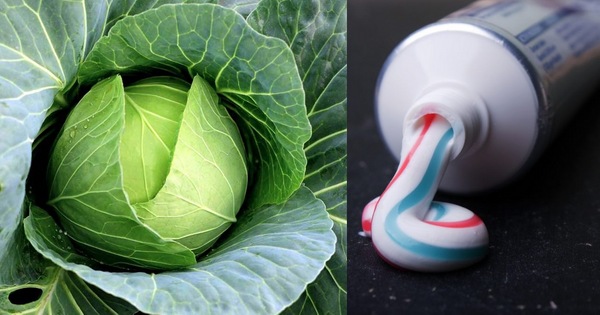
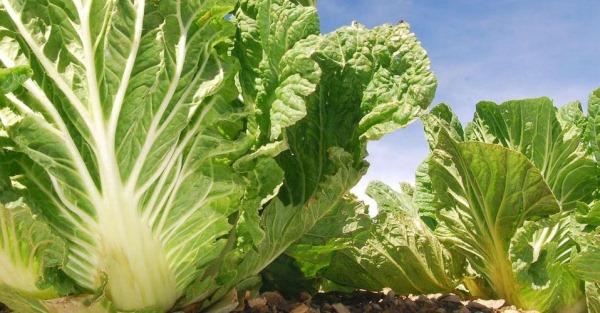
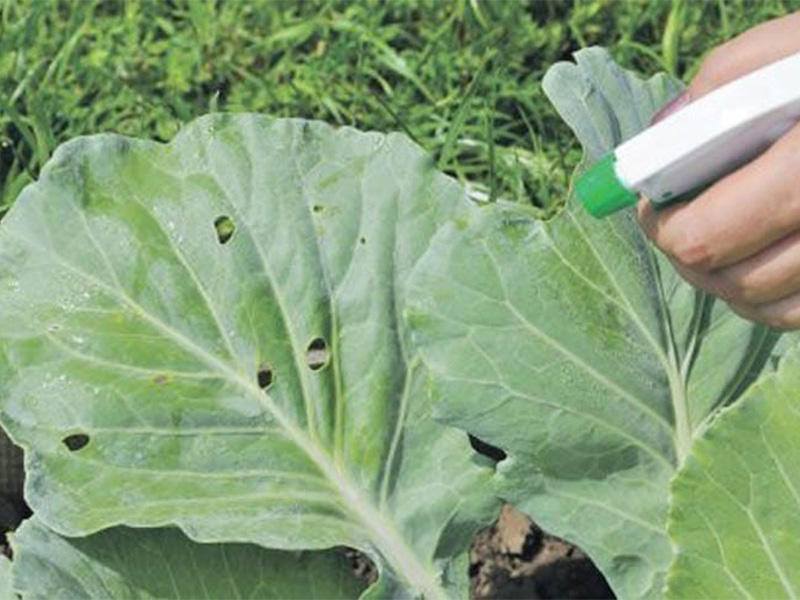
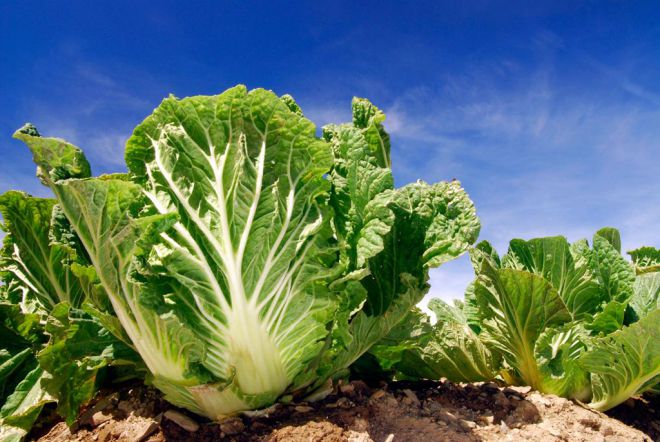 How to grow Chinese cabbage on your site?
How to grow Chinese cabbage on your site?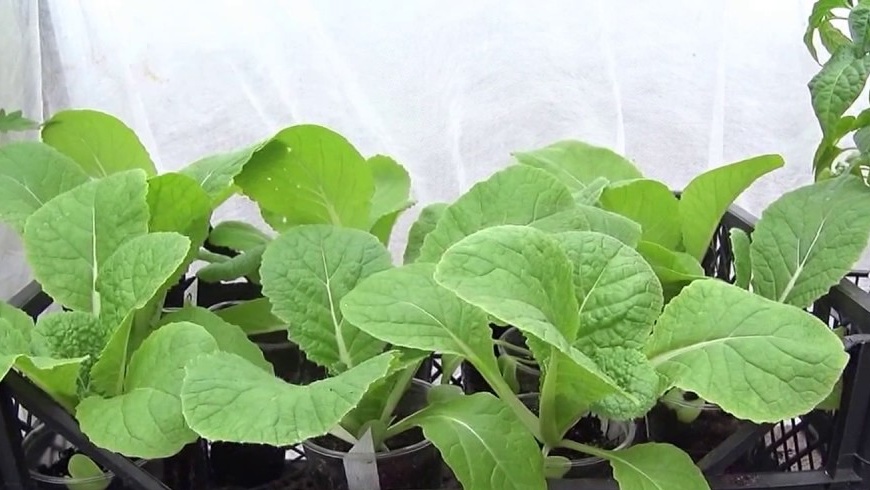 When to plant Chinese cabbage on seedlings in 2024
When to plant Chinese cabbage on seedlings in 2024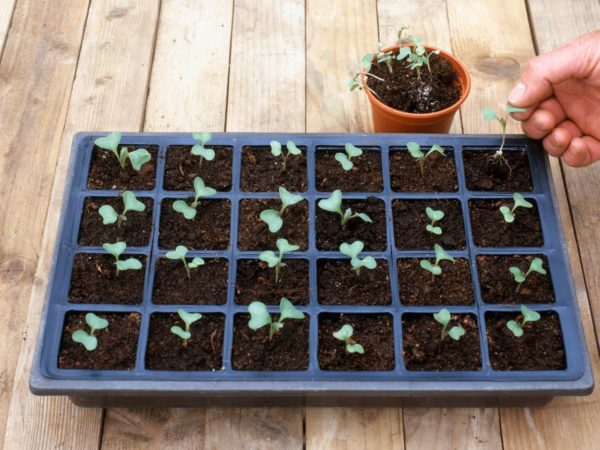 When to sow cabbage for seedlings in 2019 on the moon
When to sow cabbage for seedlings in 2019 on the moon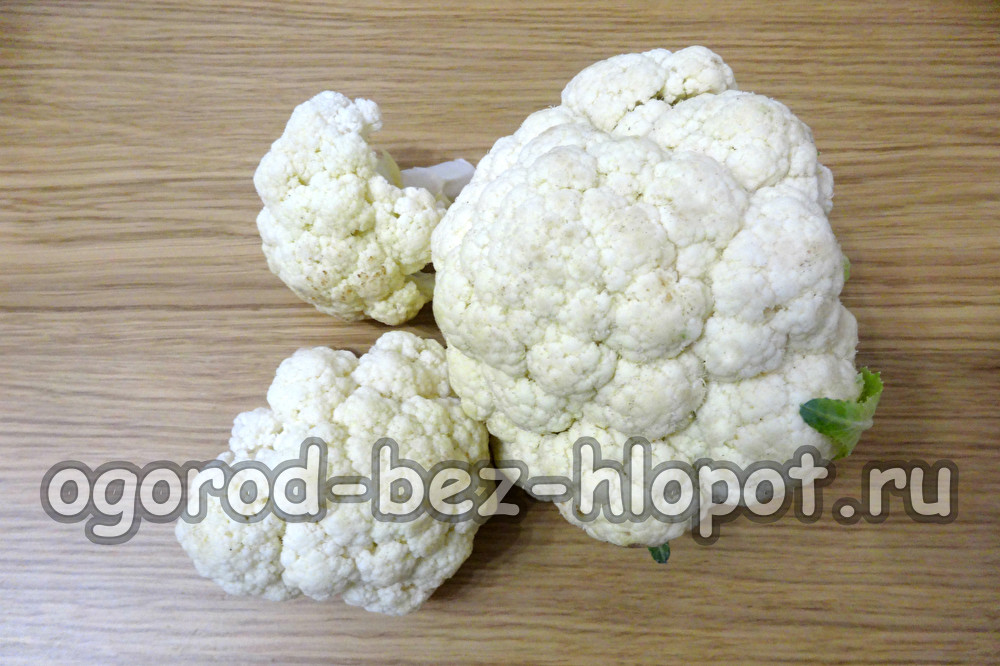 Cauliflower: how to grow large snow-white inflorescences
Cauliflower: how to grow large snow-white inflorescences